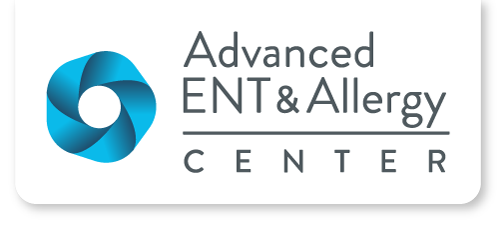Eosinophilic Esophagitis Treatment in Denver, CO
Experiencing discomfort from eosinophilic esophagitis? Learn more about what causes EoE, what symptoms are like, and how you can get treated in Denver.
Eosinophilic Esophagitis
For a long time, doctors mistook eosinophilic esophagitis, or EoE, for gastro-esophageal reflux disease (GERD), or acid reflux. Symptoms are similar — chest pain and trouble swallowing — but GERD medication does not alleviate EoE symptoms.
In the late 1990s, doctors started to realize that EoE is a completely different condition, caused by white blood cell buildup in your esophagus, the tube that sends food and liquids from your mouth to your stomach. This blood cell buildup is triggered by other conditions, including acid reflux, food allergies, and seasonal allergies.
If you’re experiencing difficulty swallowing, chest or stomach pain, or food getting stuck in the throat, you may be suffering from EoE. With the help of a doctor and a certified allergist, you can uncover what’s triggering your EoE and find long-term relief.
 What is Eosinophilic Esophagitis?
What is Eosinophilic Esophagitis?
Eosinophilic esophagitis is a chronic immune system disease, triggered by allergies or acid reflux. In response to these conditions, your immune system overreacts, and this is what happens:
- White blood cells in your digestive tract (called eosinophils) multiply and enter the esophagus.
- The build-up of these white blood cells in your esophagus causes swelling.
- The inflammation leads to scar tissue build up and narrowing inside of the esophagus.
- This damage and narrowing makes swallowing difficult (dysphagia) and causes food to get stuck in your throat (impaction).
- You may experience other symptoms, including chest pain or stomach pain.
Causes of Eosinophilic Esophagitis
While the exact cause of EoE is not yet known, the majority of EoE patients are atopic, meaning they have symptoms of one or more allergic disorders, including asthma, allergic rhinitis, eczema, and food allergies. Certain genes may also play a role in EoE.
Environmental Allergies
For some patients, EoE worsens during high pollen seasons. Airborne allergens, like pollen, animal dander, dust mites, and mold, seem to trigger EoE, and allergy testing is typically included in the EoE evaluation.
Food Allergies
The main cause of EoE is an adverse immune system response to a particular food, but the reaction is usually delayed, so it’s difficult for doctors to identify the specific food trigger in EoE patients. Common foods that trigger EoE include eggs, soy products, and wheat.
Risk Factors for Eosinophilic Esophagitis
There are several risk factors associated with eosinophilic esophagitis, including:
- Gender. EoE is more common in males.
- Allergies and asthma. If you have existing allergies, you’re more likely to be diagnosed with EoE. These include hay fever, eczema, asthma, and food allergies.
- Family history. If someone in your family has EoE, you have a higher chance of having it.
- Climate. People who live in cold, dry climates are more likely to have EoE.
- Season. EoE is more commonly diagnosed between spring and fall, when outdoor allergen levels and exposure are higher.
Eosinophilic Esophagitis Symptoms
While EoE was originally thought to be a childhood disease, it’s now quite common in adults as well. Symptoms of eosinophilic esophagitis can differ, depending on your age.
Infants and toddlers:
- Feeding issues
- Poor weight gain and growth
- Reflux that doesn’t improve with medication
- Vomiting
Older children:
- Vomiting
- Abdominal pain
- Trouble swallowing (especially solid foods)
- Poor appetite
- Reflux that doesn’t improve with medication
Adults:
- Trouble swallowing (especially solid foods)
- Food getting stuck in the esophagus (impaction)
- Reflux that doesn’t improve with medication
- Heartburn
- Chest pain
- Stomach pain
– What Our Patients Say –
“Great service. Very informative and professional about everything. They make you feel really comfortable and make sure you understand exactly what’s going on.” – L.P.
When to See a Doctor
EoE can be difficult to identify and diagnose because common symptoms of EoE are so similar to acid reflux symptoms. It’s important to see both an allergist and a gastroenterologist to get an accurate diagnosis and treatment plan. You should see a doctor if:
- You experience chest pain.
- You have frequent or severe EoE symptoms.
- You take over-the-counter medications for heartburn more than twice a week.
- GERD medications are not working to treat your symptoms.
How Does a Doctor Diagnose Eosinophilic Esophagitis?
In order to diagnose EoE, your doctor will do the following:
- Medical history questionnaire. Because EoE has genetic implications, it’s important for your doctor to know both your history of symptoms and your family history.
- Upper gastrointestinal endoscopy. Your doctor will use an endoscope (flexible tube with a light and camera at the end of it) to examine the esophagus, stomach, and first part of the small intestine to look for injury, inflammation, and thickening of the esophageal wall.
- Biopsy. During the endoscopy, your doctor will take a small tissue sample of your esophagus to check for high eosinophil counts. A high eosinophil count (more than 15) indicates that you have EoE.
Allergy Testing and Eosinophilic Esophagitis
If you are diagnosed with EoE, your doctor may do further tests to check for specific allergens to help create a customized treatment plan. In order to avoid triggering EoE, it’s helpful to know the underlying causes of your allergies. Potential allergy tests include:
Scratch test (or skin prick test). During a scratch test, your doctor can test 40 environmental allergens at the same time, including pollen, mold, pet dander, and certain foods and medicines. Your allergist will test an area of your skin with a small extract of allergen to see if you have an allergic reaction.
If you are allergic to a substance, your skin will react at the prick site with swelling and redness within 15 minutes. While a skin prick test can identify environmental triggers and some food allergies, this test is not very helpful in identifying foods that cause EoE.
Blood test. Sometimes an allergist may do a blood test to see if you react to specific allergens. During a blood test, a sample of your blood is sent to a lab where they will add allergens to measure levels of Immunoglobulin E antibodies. Results are available after a few days.
While blood tests can identify environmental allergens and a large number of food allergies, they are not helpful in identifying food that causes EoE. Both the scratch test and the blood test check for IgE antibodies and EoE is not caused by IgE antibodies.
Food patch test. Food patch tests are no longer recommended for evaluating EoE. Instead, doctors will prescribe dietary therapy to help identify specific food allergies.
Eosinophilic Esophagitis Treatment
There’s no single go-to treatment for EoE, and researchers are continuously studying new options. Most often, doctors will recommend a combination of dietary therapy and medications to treat eosinophilic esophagitis. Follow-up endoscopies with biopsies help monitor the effectiveness of the treatment plan.
Diet management EoE treatments include:
Directed Elimination Diets
If you test positive to certain food sensitivities during a scratch test or blood test, your doctor may recommend removing specific foods from your diet to see if EoE symptoms improve.
While elimination diets have helped improve some patients’ EoE symptoms, this type of diet has not proven to be highly successful in research studies.
Empiric Elimination Diets
In an empiric elimination diet, your doctor will have you remove major food allergens from your diet, including dairy, eggs, wheat, soy, tree nuts, and shellfish. Foods can then be added back one at a time with follow-up endoscopies to determine specific allergens.
Empiric elimination diets have been extremely helpful in treating EoE, but they can be difficult to follow without the help of a dietician.
Elemental Diets
Elemental diets are usually used for children with multiple food allergies. In this diet, you remove all proteins and drink an amino-acid-based formula. Patients can sometimes consume a couple of simple foods, with a low likelihood of triggering EoE. If symptoms go away, you may try adding foods back one at a time.
Medications that help treat symptoms of EoE include:
Proton Pump Inhibitors
Proton pump inhibitors, or PPIs, are typically prescribed to reduce acid production in the stomach. However, they have also proven to help reduce esophageal inflammation in some patients with EoE.
PPIs are often the first treatment doctors will prescribe for EoE. While some patients experience a dramatic decrease in eosinophils and inflammation, others don’t respond at all.
Corticosteroids
Corticosteroids control inflammation and are helpful medications in treating EoE. By swallowing or inhaling small doses of corticosteroids, you can control and reduce inflammation in the esophagus.
Other treatments for EoE symptoms include:
Esophageal Dilation
Your doctor may recommend esophageal dilation if you are having difficulty swallowing. During this procedure, your doctor will stretch the esophagus by inflating a tiny balloon or inserting a tube into the narrow section.
Biologic Therapy
Biologics are new intravenous therapies that target inflammation reduction. Several biologics are considered orphan drugs or breakthrough therapies by the FDA, and others may be approved in the near future.
Get Help
At Advanced ENT & Allergy, Dr. Menachof can help you determine the role that seasonal allergies may be playing in EoE. Book a consultation today and let us help you uncover the cause of your discomfort and find a treatment plan that works for you.
